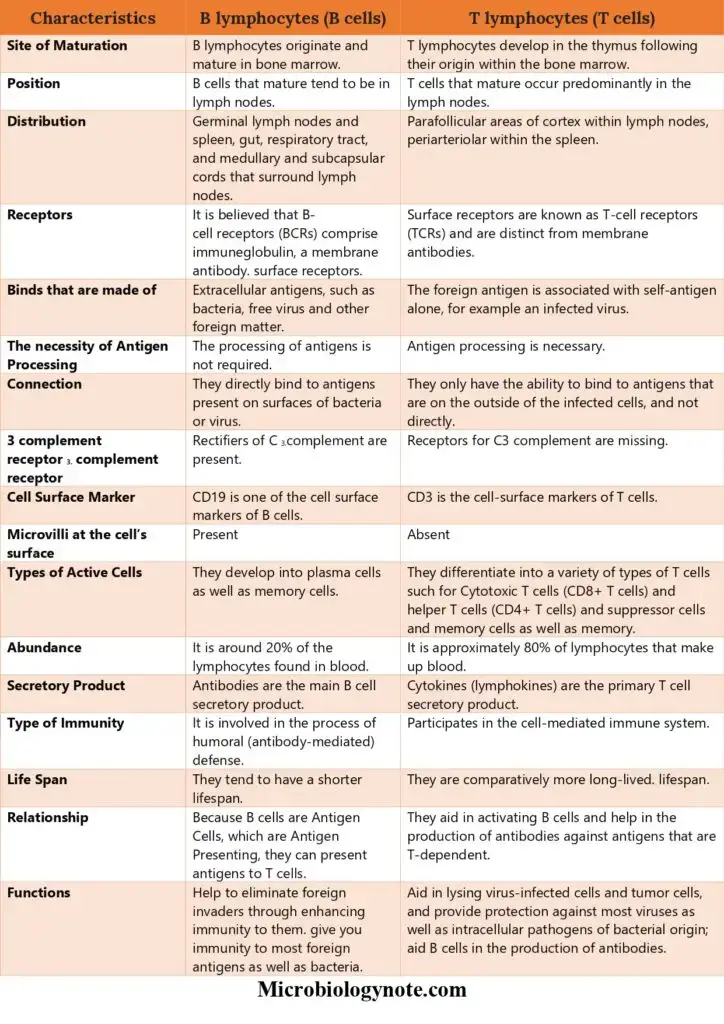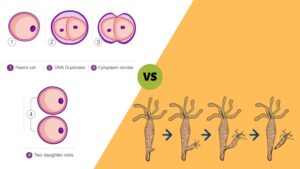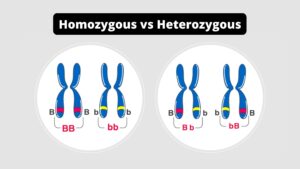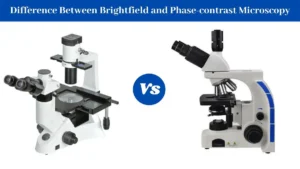B cells and T cells are two kinds of lymphocytes involved in activating the immune system within the body. Both B and T cells are created within the bone marrow. T cells move into the thymus to develop. T cells as well as B cells play a role in the recognition of pathogens as well as other harmful foreign substances within the body, such as parasites, viruses, bacteria and dead cells. Two types of T cells comprise called helper T cells and cytotoxic cells.
The primary function of T cells that helper function is to activate cytotoxic T cell as well as B cells. These cells kill pathogens via the process of phagocytosis. B cells make and release antibodies, which activate the immune system in order to kill pathogens. The major distinction between B cells and T cells lies in the fact that B cells only recognize antigens of viruses inside the infected cells, while B cells are able to recognize antigens that are on the surface of both viruses and bacteria.
What are T Cells?
The T cell is a form of lymphocytes which develop inside the thymus. They are also known as T lymphocytes. They are produced by bone marrow cells and are then transferred into the thymus for maturation. T cells that are immature are divided into three kinds of T cells that include helper T cells, cytotoxic T cells and T cells that suppress. The helper T cells recognize antigens , and then activate both cytotoxic T cells as well as B cells. B cells produce antibodies, while cytotoxic T cells kill the infected cells through the process of apoptosis. T cells that suppress the immune system. your immune system that they can tolerate self-antigens and prevent an autoimmune disease.
Helper and cytotoxic cells detect various antigens within the circulation system. These are destroyed by pathogens. The antigens are to be displayed on the surface of the antigen-presenting cells (APS). Macrophages, dendritic cells Langerhans cells B cells, and dendritic cells are some of the kinds of APSs. They phagocytize pathogens, and then display epitopes onto their surfaces. The molecules that contain epitopes that are on the surface of APSs are referred to as major histocompatibility complicated (MHC). The two kinds of MHC complexes are MHC class I and MHC class II.
These MHC Class I molecules are found on the surfaces of T cells that cause cytotoxic damage. MHC class II molecules are found on the surface of T cells that aid in the process of forming. The T receptors (TCR) of T cells are able to bind with MHC molecules that reside on the APSs. Two types of coreceptors may be identified that stabilize the binding. There are two types of coreceptors: CD4 coreceptor, and CD8 coreceptor. The CD4 coreceptors reside on the surface of T cells that helper them while the CD8 coreceptors reside on the outer surface of T cells that cause cytotoxicity. The CD3 molecules that are on the surface of T cells that are cytotoxic transmit signals to the cell regarding the attachment to the MHC complex to the T cell.
Different types of T cells (TCR) are present at the surfaces of T cells, which are able to recognize different types of antigens. Thus, the immune response that T cells trigger can be specific to the pathogen type and is referred to as cell-mediated immunity (CMI). Cell-mediated immunity is a form that is part of the adaptive immune system.
What are B Cells?
B cells are a different kind of lymphocytes and are formed in bone marrow. They are known as B lymphocytes. They are involved in the process of establishing or maintaining the antibody-mediated immune system (AMI). This means that B cells make an antigen specific immuneglobulin (Ig) as well as antibodies that are directed at pathogens that invade. B cells from the naive state can bind to antigens that are on the surface of B cells through receptors (BCR) found in the skin. This can trigger the transformation of the B cells that are naive into plasma cells producing antibodies as well as memory cells.
Certain types of antigens require involvement of T helper cells in conjunction with plasma cells to create antibodies. They are known as T-dependent antibodies. But, some antigens are T-independent antigens. When an antigen-binding plasma cell is an antigen T-dependent, aider T cells that are containing CD4 coreceptors, increase creation of antibody. Antigens that are T-dependent generate antibodies that have high affinity. Contrarily, T-independent antigens cause the creation of antibodies with low affinity. The T-independent pathway mostly produces IgG as well as IgM antibody. The immunoglobulins that are that are produced by the T-dependent pathway are more specific.
A primary response to the immune system as well as the second immune response comprise two different types of immune response produced by B cells in response to an antigen. Primary immune responses are produced by the B cells that are naive and the secondary response is produced by memories B cells.
Similarities Between T Cells and B Cells
- Both B and T cells are derived from bone marrow.
- T cells as well as B cells are two kinds of lymphocytes.
- As both T cells as well as B cells, are both subtypes of white blood cells both types of cells are found in blood.
- T cells as well as B cells are also present in the lymphatic system.
- Both B and T cells play a role in adaptive immune system.
- Both T and B cells are able to recognize a variety of pathogenic antigens.
Differences between B Cells and T Cells – B Cells vs T Cells
| Characteristics | B lymphocytes (B cells) | T lymphocytes (T cells) |
| Site of Maturation | B lymphocytes originate and mature in bone marrow. | T lymphocytes develop in the thymus following their origin within the bone marrow. |
| Position | B cells that mature tend to be in lymph nodes. | T cells that mature occur predominantly in the lymph nodes. |
| Distribution | Germinal lymph nodes and spleen, gut, respiratory tract, and medullary and subcapsular cords that surround lymph nodes. | Parafollicular areas of cortex within lymph nodes, periarteriolar within the spleen. |
| Receptors | It is believed that B-cell receptors (BCRs) comprise immuneglobulin, a membrane antibody. surface receptors. | Surface receptors are known as T-cell receptors (TCRs) and are distinct from membrane antibodies. |
| Binds that are made of | Extracellular antigens, such as bacteria, free virus and other foreign matter. | The foreign antigen is associated with self-antigen alone, for example an infected virus. |
| The necessity of Antigen Processing | The processing of antigens is not required. | Antigen processing is necessary. |
| Connection | They directly bind to antigens present on surfaces of bacteria or virus. | They only have the ability to bind to antigens that are on the outside of the infected cells, and not directly. |
| 3 complement receptor 3. complement receptor | Rectifiers of C 3.complement are present. | Receptors for C3 complement are missing. |
| Cell Surface Marker | CD19 is one of the cell surface markers of B cells. | CD3 is the cell-surface markers of T cells. |
| Microvilli at the cell’s surface | Present | Absent |
| Types of Active Cells | They develop into plasma cells as well as memory cells. | They differentiate into a variety of types of T cells such for Cytotoxic T cells (CD8+ T cells) and helper T cells (CD4+ T cells) and suppressor cells and memory cells as well as memory. |
| Abundance | It is around 20% of the lymphocytes found in blood. | It is approximately 80% of lymphocytes that make up blood. |
| Secretory Product | Antibodies are the main B cell secretory product. | Cytokines (lymphokines) are the primary T cell secretory product. |
| Type of Immunity | It is involved in the process of humoral (antibody-mediated) defense. | Participates in the cell-mediated immune system. |
| Life Span | They tend to have a shorter lifespan. | They are comparatively more long-lived. lifespan. |
| Relationship | Because B cells are Antigen Cells, which are Antigen Presenting, they can present antigens to T cells. | They aid in activating B cells and help in the production of antibodies against antigens that are T-dependent. |
| Functions | Help to eliminate foreign invaders through enhancing immunity to them. give you immunity to most foreign antigens as well as bacteria. | Aid in lysing virus-infected cells and tumor cells, and provide protection against most viruses as well as intracellular pathogens of bacterial origin; aid B cells in the production of antibodies. |




